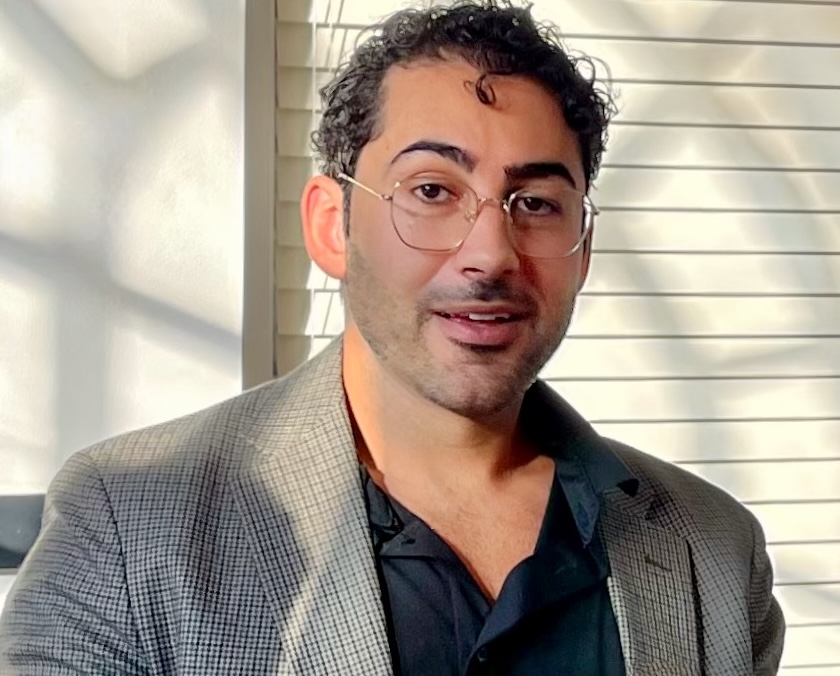The Five Hindrances and the Flow of Experience: Excerpt from Integral Vipissana: Mindfulness through Psychology, Neuroscience, and the Satipatthana Sutta
By Fernando Rodriguez Bornaetxea, PhD, and Andrew A.H. Molloy Biographies at bottom of feature Excerpted with permission from Integral Vipissana: Mindfulness through Psychology, Neuroscience, and the Satipatthana Sutta. Highpoint Life, 228 pages, US$19.99. Available through Amazon, Barnes & Noble...

By Fernando Rodriguez Bornaetxea, PhD, and Andrew A.H. Molloy
Biographies at bottom of feature
Excerpted with permission from Integral Vipissana: Mindfulness through Psychology, Neuroscience, and the Satipatthana Sutta. Highpoint Life, 228 pages, US$19.99. Available through Amazon, Barnes & Noble and booksellers globally. Copyright © 2023 by Rodriguez and Molloy.

The Buddha faced the challenge of discovering how the human mind works without the knowledge we possess today in physiology or neuroscience. Therefore, the language he used was symbolic, ambiguous, and sometimes cryptic. For that reason it can be incredibly valuable to illuminate the Satipatthana Sutta – the Buddha’s discourse on the four foundations of mindfulness – in the context of contemporary neuroscience, psychology. The result is a powerful new path to mindfulness and happiness for Buddhist meditators at all levels.
The fourth foundation is an immersion in the flow of experiencing continually changing states of consciousness. Vipassana is all about witnessing the arising and ceasing of phenomena and discovering the causal link that joins them. When we meditate, we try to discover the order that is implicit in the bewildering flow of phenomena. Thus, we realize the need for a certain mental stability. Perspicacity leads to calm, and calm leads to perspicacity. Meditation leads to understanding and controlling all the obstacles to calm: agitation or disconnection, cognitive, affective, and somatic. This process gives us insight into the causal relationships between physical sensation and desire, perception and conditioning, or cognitive structures and consciousness.
The word dhamma is used in nearly all doctrines and religions of Indian origin to refer to the truth, the law, or universal order. In Buddhism, dhamma refers to the Buddha’s teachings, or the Buddha’s truth. By extension, dhamma is also used to refer to mental phenomena or events as being the only reality we have. We must remember that for the Buddha, as well as for other Eastern traditions, this experience is more real than the outside world. The only certainty is what is experienced in each moment.
Although we can direct attention towards specific aspects of experience such as somatic activities, those of feeling or of knowing, all of these are encountered in that flow of phenomena that we call “experience.”
Experience includes experiencing its own phenomena. In other words, we can develop knowledge about experience, as occurs with the three previous foundations, or we can live the experience. The fourth foundation of attention deals with phenomenological experience—the contemplation of experience just as it is.
It would seem that consciousness can know itself, but in doing so it generates a “blind spot,” a moment of separation that in turn produces the interplay of nama and rupa, what knows and what is known. From this perspective there is no dualism—instead, it is one thing that turns upon itself and objectifies and materializes it.
This process that collapses consciousness into matter begins with the development of reception and emission systems between the two aspects of consciousness, thereby producing the appearance of inside-outside. The generation of a limit gives rise to the experience of separation between one and the other. From now on, the maintenance of one is prioritized over the whole, and it becomes the individual.
The centrality and sovereignty of the individual converts the flow of consciousness into an individual experience, a management system based upon receiving and transmitting information. Through this, the individual is able to sustain the experience of existing as a separate entity.
Experience begins with sensation, which is the experience of connecting. Contact involves the object, the receiver, and consciousness. For instance, shape and color are the object that an eye can receive, but this contact would not produce anything were there to be no consciousness. What knows the contact between the eye and the visible object is visual awareness. To have visual knowledge or awareness does not mean objective knowledge, in the sense of true knowledge, given that the eye is only able to capture what it has been conditioned for, its materiality being a type of that same conditioning. To have awareness or to be aware does not imply that this is decided voluntarily, even though awareness implies intentionality (as this is materialized in the evolutionary process itself, generating behaviors that are not explicitly elaborated but rather implicitly executed). The remarkable thing about this process is that we can convert what realizes into the object of realization, giving rise to a process of self-knowledge, self-transformation, and self-transcendence.
It is not a case then that the object and the sensory base produce consciousness but that there must be consciousness for the object and the base to make contact. In this model, consciousness is a fundamental component of reality that is beyond space and time. As we saw in the contemplation of the mind, time is a concept that is the origin of the individual, while space is another concept that begins with proprioception and is then represented internally, thereby creating the mental space of representations. Consciousness is what maintains balance. It is needed for material objects and matter in the sensory base to produce sensation by their interaction, which is space-time located experience. The knowing operations performed on sensation generate a personalized perception of the world.
The Five Hindrances
To heed the fourth foundation is to heed the flow of experience and recognize in it the products of conditioning, stripping back experience until its disappearance.
A stable mind is only possible if it transcends a series of limitations that we nevertheless consider to be inherent to its own functioning. Firstly, one must transcend doubt in the form of critical thoughts, which prevent us from immersing ourselves in the natural flow of phenomena—what we have called “first-person experience.” Secondly, one must free oneself from preferences and expectations, which come in the shape of, for example, ill will or a desire for sensual pleasures. Thirdly, a stable mind needs to know how to manage skillfully moments of agitation or torpor that occur regularly, whether due to psychodynamic circumstances or organismic causes. These then are the obstacles that the Sutta refers to, and we intend to clarify them in this section.
When we practice meditation, we are using a technology that modifies the flow of phenomena. Although we are paying attention to the tactile sensations of breathing or we are listening to outside noise, it is our feelings or thoughts that take on a greater dimension. There is an abundance of incoming information from the mind itself, and not so much from the external senses. As we go deeper into meditation, attention focuses on experience and its most intimate nooks. There is a change of perspective that aims to witness mental phenomena more clearly and to limit the influence of physical phenomena on the process. To be precise, the “meditative set-up” is designed to experience more clearly exactly how the mind constructs experience. If the psychological system worked properly, we could direct attention towards the respiratory process without any interruption, and we could be present in the whole range of bodily movements and activities. It would not be doubted that the body is nothing more than a set of processes with a life cycle; rather, it would be accepted that the mind makes an experience pleasant or unpleasant, and that the mind constructs concepts and beliefs that pollute the experience and are not healthy for the body.
However, unfortunately, there is a whole series of activities that stops the system from simply paying attention to phenomena as they emerge and cease to be. Sati and samadhi, well balanced by vayama, could repose on the respiratory process (or on any other object or process) the limited unified attention skills capable of effortlessly observing the process moment by moment. However, when we want to turn our attention to the flow of experience, attention fluctuates, and our attention resources wane. To be able to attend consciously, we choose one single process, breathing, which helps us learn samadhi or the necessary psychological activity so as to be present in all the experience processes. Whichever process we choose, the mind has to learn to be attentive, focused, and stable. To this end, it has to overcome what the Sutta calls “hindrances” to samadhi. (See Figure 12.)
The hindrances to samadhi are the hindrances of the attention system. Sati attends to changes in samadhi and vayama. Samadhi is in charge of directing attentional focus, but it suffers from the hindrances of selective attention—that is to say, the conditioning of what to focus on and how to focus effectively. The amount of effort and activation depends on vayama, which suffers from the hindrances of alertness and vigilance—in other words, too much effort or laxness when exercising attention.
This may seem contradictory, but it is a polarity. We tend towards either over-exerting and making too many demands on ourselves, or on the contrary, self-condescension and self-indulgence. In one case, there is an excess of effort, and in the other, an excess of laxity.
Understanding the Hindrances
Although it is traditional to talk of five hindrances, what does this concept really mean? A pedagogical and descriptive way of looking at it is based on three forces employed by “that which realizes” to relate to the phenomenon: safe-insecure, attractive-repulsive, and active-inactive.
The five hindrances can be understood as the flow of experience subject to these three forces. Certainty controls distrust, satisfaction controls desire, and agency controls interest.
The first hindrance is traditionally labelled as “doubt,” and it is experienced as cognitive resistance to ceasing its activity. In other words, doubt is thought necessary for adequate cognitive activity. The “I narrator” we have referred to, for instance, tends to get involved continually.
This “I” is a construct with all the conscious and unconscious memories of what it considers “its history.” This history is woven from beliefs and expectations about itself, concepts and ideas about things, and judgments and perceptions elaborated to suit itself. It is continuously opining and making decisions based on all of this, believing that it is a sovereign and lasting entity, rational and correct. Every kind of image, memory, and thought emerge in the mind because of its inertia. Doubt is the manifestation in experience of a lower level of certainty, or confidence, held in the practice of conscious attention as a method for liberation.
Affective reactivity is usually described as the obstacles of “desire for sensual pleasures” and “ill will.” The conditioned mind tends to seek its usual “sensual palliatives” and to obsess over its preferred “enemies” instead of reposing in serenity. Individual and family survival are the origins of the pursuit of pleasure and avoidance of pain. Attacks, avoidance, sexual desire, caring for oneself and for others, the desire to exist, submission, comparison, and depression are deeply and unconsciously entrenched in the human mind, and they have been modelled in everybody by the search for reinforcement and by the avoidance of frustration. The considerable force of attraction and repulsion has resulted in addictions and aversions that dominate our lives, even if we justify our actions with the very best reasoning and a longing for justice.
Activation-level conditioning ranges between “restlessness or agitation” and “sloth or lethargy.” Working together with the other obstacles, the organism gets agitated or depressed, preventing us from being attentive to the present. Regulating the activation level of the organism is a primary function, one that is very primitive and basic. Although it can be affected by abrupt changes in the environment, as well as by voluntary activation or relaxation activities, it has a characteristic tonic shape in each organism. To speak about the activation level is to speak about the vitality of the organism.
The alertness level is the energetic momentum of the organism. Activation is subservient to survival of the individual or species and is directed by the reflexes of orientation and selective attention. Whatever in the immediate environment that may be good or dangerous for the organism is selected. This selection and orientation system starts out as an unconscious orientation reflex, programmed by phylogenetic inheritance and preverbal experiences, which later becomes a conscious skill that helps guide us towards what interests us, or escape from anything that is threatening.
There is also subliminal guidance that works based on prejudice and an ability to inhibit any tendencies that depend on executive attention. Executive attention also needs a sufficient level of activation to be able to perform its functions. Too much activation starts up automatic processing, potentially resulting in more errors; too low an activation level does not allow us to clearly detect what the mind is doing, and consequently, we’re unable to execute actions which are appropriate to the situation. When both intention and selection cease, alertness always remains as passive surveillance. It will only kickstart the other two systems when there is a real danger to the survival of the organism.
Notwithstanding, the labels used to name obstacles can confuse us. Sati detects the changes in the quality and content of awareness, not concepts. It is not particularly useful to observe the obstacles’ content in itself, which is often times obvious and repetitive. What is useful is the change resulting from the interference by the other attentional networks that drag observation towards other phenomena. These interferences can be changes in the activation level of the organism and a resulting oscillation between agitation and lethargy. There can also be cognitive changes that oscillate between uncertainty and credulity, and above all, affective obstacles that oscillate between attraction and repulsion.
So, attention is subject to opposing forces that mutually cancel out at the point of equilibrium: calmness for the level of activation, confidence for the cognitive, and impartiality for the affective.
Maintaining Balance in the Face of Hindrances
The “meditative stage” modifies the usual state of consciousness. The body is used to responding to external and internal stimuli with physical or verbal behavior. However, in meditative practice behavior is restricted by immobility and silence, which in turn produces physical tension or mental agitation. This tension can grow because of the effort of focusing attention on the phenomenon (samadhi) and the agitation due to the high speed of the process, which stops us from being present in the changes (sati).
Vayama is in charge of maintaining balance or, to put it another way, of managing the tension and agitation. Too much effort on concentration leads to mental irritation and obsession, while too much attention to change produces disorientation and confusion.
To be present in the process, or sati, is to keep processing slowly, frame by frame. Reducing processing speed allows for an improved focus on each phenomenon (samadhi). Improved focus makes it more obvious when there is presence, which then allows us to realize there is change in the phenomenon. At first, sati often is lost due to the intrusion of a conditioned phenomenon—and when it reappears, many phenomena may have passed without us detecting them. However, with training we can be present when the new phenomenon arises, and in time we can be present at the beginning, middle, and end of the entire sequence without obsessing or becoming disorientated.
When we deliberately try to pay attention to the process of mental phenomena, we discover that most of the time, sati is not present. Instead, the experience process is being controlled by a series of automated associative chains, composed of cognitive prejudices, affective preferences, and alterations in the level of body alertness. If our only intention is to keep focusing on a single object, we will not realize that all this activity is going on, and we will continue voluntarily stretching the system without understanding precisely how it works. However, if the intention is to discover how dissatisfaction works, we will see that the process has its own dynamics, and the illusion that “I” controls the experience will begin to fade.
The change in the body’s activation level imposed by being both immobile and vertical may produce pleasure or displeasure. These in turn may be related to sensory images or memories that activate or deactivate the organism in a continuous chain of associations and modifications that the “I” in its usual state of consciousness may not even notice. Those are the manifestation of the “hindrances.” The mind, explicitly or implicitly, realizes that there are continual changes in the object of attention and begins to experience the strength of the interconnections, which stops it from breaking and stopping them. The development of sati will reveal these conditionings, bringing about effective regulation of the incoming information by the six senses, its affective evaluation, and its cognitive processing.
Fernando Rodriguez Bornaetxea, PhD, was a lecturer in The History of Psychology and Transpersonal Psychology at The University of The Basque Country for twenty-one years. He spent thirty years with his Master, Ajhan Dhiravamsa, who entrusted him with the task of transmitting the Dhamma. He has worked as a psychotherapist for over thirty years. He leads meditation retreats, teaches Buddhist Psychology courses and is a writer and lecturer.
Andrew A.H. Molloy, MA in TEFL, has spent over 40 years teaching English in firms, universities and at business schools throughout Italy, Catalonia and The Basque Country. He has studied Vipassana and meditated with Fernando for over 20 years

Excerpted with permission from Integral Vipissana: Mindfulness through Psychology, Neuroscience, and the Satipatthana Sutta. Highpoint Life, 228 pages, US$19.99. Available through Amazon, Barnes & Noble and booksellers globally. Copyright © 2023 by Rodriguez and Molloy.

 MikeTyes
MikeTyes 
































